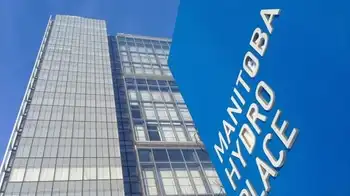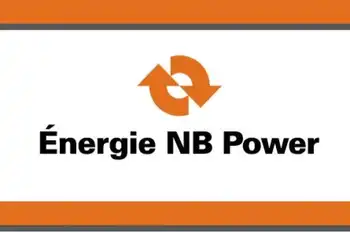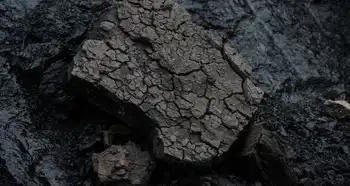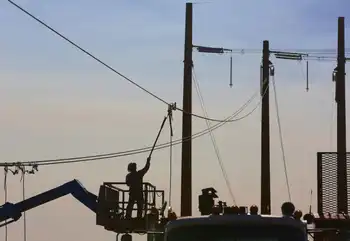Debate flares over health of power grid
By Houston Chronicle
Substation Relay Protection Training
Our customized live online or in‑person group training can be delivered to your staff at your location.

- Live Online
- 12 hours Instructor-led
- Group Training Available
No one knows that better, perhaps, than some East Texas customers of New Orleans-based Entergy.
Two weeks after the storm, some 58,000 of its residential and business customers were still without power as the weekend began, thanks to lines that were ripped down and transformers and substations that were knocked out.
True, Entergy took two hard hits this hurricane season, first with Katrina and then with Rita. The company even had to scramble to move its swamped corporate headquarters to Jackson, Miss.
But industry critics say if Entergy had invested more in its transmission system, some customers on the fringes of the storm might not have faced rolling blackouts and extended power outages.
Pat Wood III, who chaired the Federal Energy Regulatory Commission until this summer, said setting aside the legitimate storm damage - and there is a lot of it - Entergy's grid was already weak and chronically underfunded.
"Honestly, the fix for this is a more robust grid. Entergy has not invested in transmission as I think it should. It's a standing issue I had as a regulator and still have with this company," Wood said.
Entergy's vice president of transmission, John Zemanek, is adamant the company has not ignored transmission and said Wood is using the post-hurricane power problems "to pursue another agenda."
Entergy has put nearly $2 billion into expanding and maintaining its system since 1999, according to Zemanek.
"It is counterintuitive to suggest that putting additional transmission facilities in the hurricane's path would have somehow improved the situation," he said. "It would have just resulted in more lines on the ground and the need for an even more extensive restoration effort."
Wood said the issue of bulking up goes way beyond Entergy's network.
The entire nation's power grid - which is really a cobbled- together patchwork of systems - is Balkanized and full of bottlenecks. Despite soaring demand for power, investment in the poles and wires that zip electrons around to end-users has been anemic for years.
The Edison Electric Institute reports industrywide investment in transmission dropped $115 million per year for more than two decades, plummeting from $5 billion in 1975 to $2 billion in 2000. Some industry estimates say it will take between $50 billion and $100 billion to bring the grid up to snuff.
For years, energy companies said they couldn't build new high- voltage transmission lines in part because environmental groups and neighborhood activists stymied their efforts. If any company was using that as an excuse to avoid investing in transmission, that crutch is now gone.
In the energy legislation President Bush signed into law Aug. 8, federal regulators were given sweeping powers to blast through virtually any barrier to building new lines.
Ken Hurwitz, a partner in the Washington, D.C., office of law firm Haynes and Boone, said FERC now has the authority to license new pathways for transmission lines when a state fails to issue a permit within a year of a company's request for one.
If the state considers a request and says no, companies can appeal to FERC for its own evaluations, including environmental assessments. And if a state puts too many conditions on a project, FERC can also step in with overriding power and take on the case.
FERC even has the power of eminent domain to take property to make way for new high-voltage pathways. There are proponents of states' rights who object to this grant of federal power over local control.
Yet Hurwitz thinks the new law will be a shot in the arm for the national grid.
"The FERC backstop really does remove major obstacles to transmission line construction," he said.
While investment in transmission has suffered for years, money has poured into power generation to meet demand.
Power plants that can generate hundreds of gigawatts of electricity were built nationwide, but the load was left to be shipped across a jumble of largely antiquated networks.
Wood said transmission costs only amount to 8 percent of the average electricity bill, so there should be room for companies to reposition capital.
Entergy began to overhaul its transmission system in Texas after grid reliability problems prompted a massive investigation by the Texas Public Utility Commission in the late 1990s that yielded a laundry list of problems and close to $10 million in fines.
Entergy tapped Joe Domino to spearhead the Lone Star revamp. Wood calls Domino a good choice.
"I do think there's hope," Wood said, adding: "This guy can't do it alone."
Domino, CEO of Entergy Texas, said Entergy has invested $100 million in two major lines in the last two years. They run from just outside Beaumont to The Woodlands and from the Conroe area to north Houston.
Domino stresses that thousands of linemen are working feverishly to fix the system, but said there is simply no way around the fact that the storm mangled Entergy's assets.
"As we go along, we're discovering problems that were not in our original estimates," he said. "It will be many, many weeks until we get all of our transmission lines up and running."
According to Entergy's annual report, $170 million more is earmarked for transmission in southwest Louisiana and East Texas between 2005 and 2007.
Across the nation, Hurwitz said there has been a slight uptick in investment since the summer of 2003, when much of the Northeast, including New York City, was blacked out one hot August afternoon.
That cascading power outage rippled across eight states and left 50 million people in the dark, and it all started when a sagging high-voltage power line touched an untrimmed tree in Ohio and tripped off. The resulting grid imbalances overloaded alternate lines and shut down power plants around the region.
Most Texas customers are isolated from compounding power outages of that sort.
That's because the Electric Reliability Council of Texas - or ERCOT - which oversees 85 percent of the state's power demand, is an island unto itself.
ERCOT actively manages the overall flow of electrons in its Texas region to ensure uninterrupted access. But there is no such meaningful interconnectivity in Texas for Entergy customers.
ERCOT only operates inside the state's borders, avoiding the flow of electricity across state lines. By doing so, it avoids interstate commerce and federal regulatory oversight. Entergy cannot be part of the ERCOT system because its grid is connected to Louisiana, Arkansas and Mississippi, although the company said it is investigating how it could restructure to come under ERCOT jurisdiction in Texas.
Michelle Michot Foss, head of the Center for Energy Economics at the University of Texas, said the ERCOT power island probably saved some Houstonians from losing electricity in rolling blackouts that otherwise could have spread from Entergy's territory. But the setup also kept CenterPoint's Texas transmission system from propping up Entergy's grid in any meaningful way.
In theory, if Entergy were hooked into ERCOT and electricity could have flowed from the west, which was out of the hurricane's reach, some of the blackouts and power outages in places like The Woodlands, Cleveland and Jasper might have been prevented.
Even though CenterPoint, which is a part of ERCOT, and Entergy, which is a part of the Southeastern Electric Reliability Council, border each other, the two companies grew up as two completely different power grids.
The old Gulf States Utilities, which was acquired by Entergy in 1992, provided power to parts of southeast Texas and southwestern Louisiana.
It ran on a completely separate system from the old HL&P lines, now owned by CenterPoint.
"They're just too different. You can't say throw me a cord so we can stay on," Wood said.











